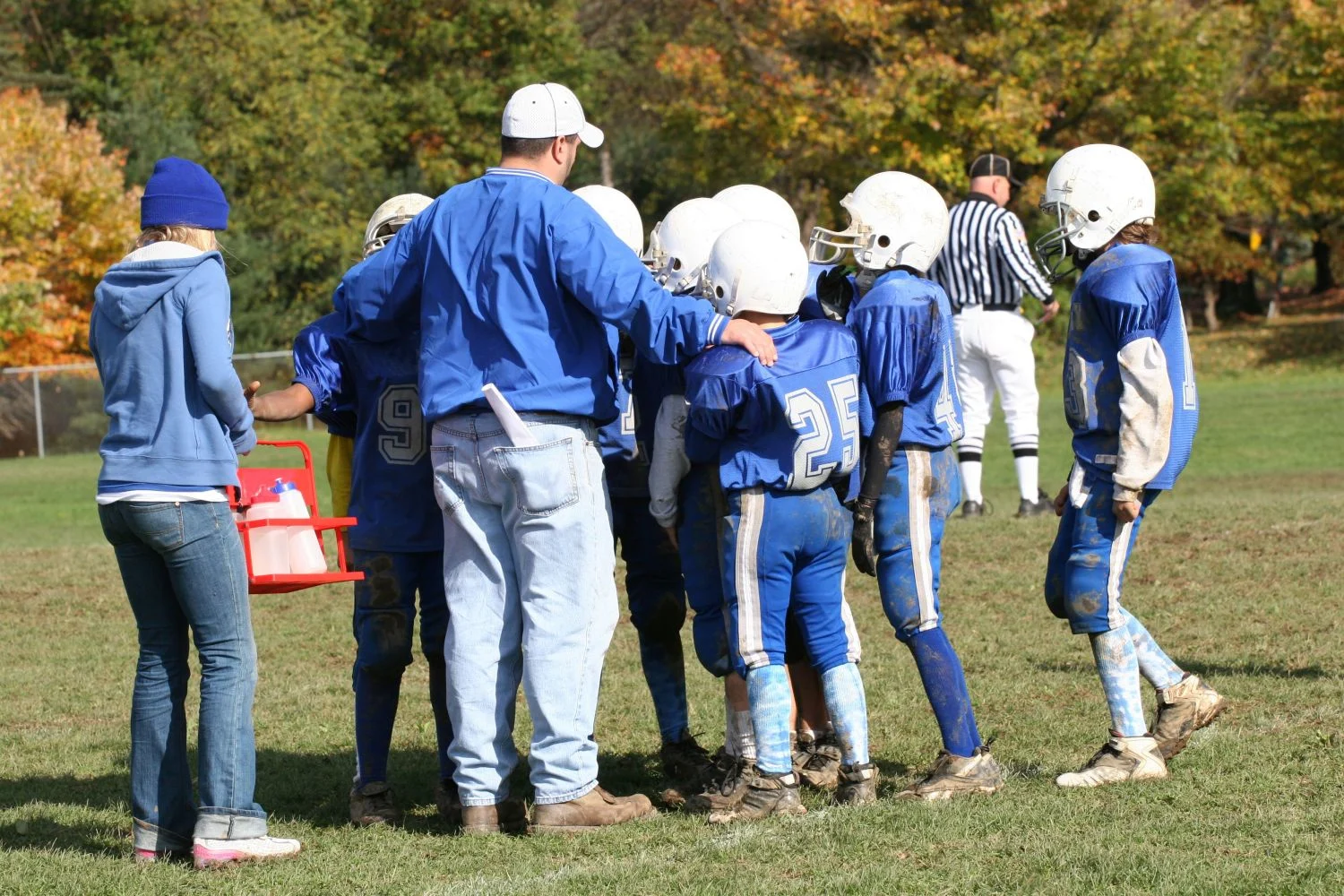How to Increase Youth Sports Participation in Your Community
Connie Harrington Last updated: March 28, 2024


Is participation in your recreational league declining? If so, you’re not alone. Studies show that the numbers of children that participate in youth sports on a regular basis have been going down in recent years. And that leaves many league officials wondering how to increase youth sports participation.
Just how big is the problem? Approximately ten years ago, 45 percent of youth between the ages of six and 12 regularly played team sports. That number has dropped to 37 percent.
The sharp decline is alarming, but don’t despair. You can use these 5 smart strategies to address downward sports participation trends.
#1: Keep Costs Down
A recent article from ESPN asserts that cost is a top barrier to youth sports participation. A recent study found family spends $692 per sport, per child, each year. Those estimated fees include registration, uniforms, and equipment. Families with multiple children in different sports programs can easily spend thousands of dollars each year on youth sports. If parents choose to enroll kids in competitive or travel leagues, their expenditures are even higher.
How can you respond to this trend? Take steps to keep league costs down and make enrollment fees as low as possible. Pursue fundraising, grants, and seek donations from your local community.
It’s no surprise that the high cost of youth sports makes participation a hardship for many economically-disadvantaged families. Young people from lower-income families are approximately 50 percent less likely to play sports than peers from higher-income families.
Having a scholarship fund is an excellent way to ensure youth from disadvantaged backgrounds can participate in your league. You can also establish payment plans to help families afford enrollment fees. And you can have equipment sharing or donation programs to make sports affordable for all.
🧠 Learn More: The Average Cost of Youth Sports
#2: Recruit Quality Coaches
Fun, teamwork, and growth are key goals of many recreational sports leagues. Many leagues emphasize the joy of playing over winning. Even so, young athletes want to get a solid foundation in the basics of the sport. This is especially true for any young people who may want to play in a competitive league or on a high school sports team.
In many leagues, parent volunteers often form the core of the coaching staff. Aim to have at least one lead coach for each team with strong experience in the sport. Adults who played sports in high school or college are ideal. Assistant coaches can have less knowledge or skill but should know the basics of the game and be able to take direction from the head coach.
Even if you have a solid base of parent volunteers, you may find it helpful to broaden your reach. Consider inviting back former coaches whose kids have graduated from your league. Reach out to former players. If you have a university nearby, you can connect with athletes there. Both team and intramural athletes can be exceptional youth sports coaches. And current high school players are often very willing to assist with coaching and help young athletes grow.

Recruiting a reliable coaching staff can build consistent participation at your organization each year. To get more coaches interested next year be sure to promote the benefits of coaching youth sports.
#3: Emphasize Safety
Safety is a top concern for many parents. And statistics from Stanford University validate that parents have a reason to be cautious. Over 3.5 million young people sustain sports injuries each year. That’s more than 10 percent of the 30 million youth athletes in the U.S.
The good news is that many of those youth sports injuries are mild strains or sprains. However, parents are well-aware of the risk of a traumatic brain injury (TBI)–which can have lifelong consequences. Twenty-one percent (21%) of all TBIs occur during participation in sports or recreation activities.
Of course, sports injury rates vary. And higher-contact sports carry the most risk of severe injury.
Alleviating parent fears about injuries can help boost league participation. According to the Centers for Disease Control (CDC), every sports program should have plans and policies in place to promote safety. Always ensure that athletes use proper gear–such as helmets, mouth-guards, and protecting padding. A quick equipment check before practices and games can spot big issues such as worn or broken gear or a simple matter of a missed buckle.
The CDC also recommends paying careful attention to temperature during practices or games. Avoid play during extremely hot temperatures and make sure athletes stay well hydrated.
You can also take part in the CDC’s HEADS UP initiative, which focuses on concussion safety. HEADS UP focuses on tips to prevent brain injury in sports such as football, baseball, cheerleading, and others. Be sure to promote your participation to let parents know about your commitment to athlete safety!

Keeping kids safe before and during games helps build a quality reputation for your youth sports organization.
#4: Grow Your Presence Online
Today, many people turn to the Internet to research everything–including youth sports leagues for their kids. You need to have a top-quality website and social media presence that answers all their key questions and makes registration easy.
Make sure your organization has an active Facebook page. Parents often do research on Facebook for local activities, so Facebook can be a great way to build credibility for organization. Creating an Instagram, YouTube, or X account can also be effective in promoting your league or club. Just be sure that any account you create is active and post at least once per month. Don’t overdo it, otherwise you’ll wind up with dead pages.
It’s also critical to establish a website for your organization so that community members can find information about your organization year round. What should you include on your website? You should provide basic details about your program, along with a list of board members and contacts. Include registration and payment functionality on your site so that you can collect athlete information and payments quickly.
Also, during the playing season, house team details and the league schedule on your website. Include maps to playing locations to make it easy for parents and coaches to find their way. And post game results and team standings to keep everyone informed.

A well-designed website will send the message that your league is organized and focused on family communication.
#5: Use Proven Outreach Approaches
Even if your teams only play a few months per year, you need to stay active year-round to keep your community engaged. Consider these other proven tactics to get the word out to your league:
- Emails to Past Participants: Keep email addresses for prior league participants on file. Send out reminders about registration dates and fees well in advance of deadlines to help families plan. And stay in touch with all athletes in your league age range. Sometimes, athletes who haven’t participated in a season or two will want to sign up again.
- Promotional Flyers: You can design and print flyers inexpensively and hang them at key locations in your community. Consider hotspots such as grocery stores and coffee shops. And don’t forget places that kids and families frequent, such as community centers, libraries, and churches. Also, some schools will let leagues send flyers home with students.
- Signs: Outdoor signs are another great way to advertise your league. Get permission to place them near schools or at the entrances to neighborhoods. Ask league members to put signs in their yards too.
- Social Media: Every youth sports league should have a Facebook page. Although you’ll have the most posting activity during the season, appoint a volunteer to share posts year-round. Sharing motivational saying, tip, or fun fact about your sport once a week can help people keep your league in mind even during the offseason.
- Year Round Fundraising - even though your organization might only play games for a few months, you should schedule fundraisers throughout the entire year. Fundraisers not only help raise valuable dollars for your organization, but also get more people in the community involved and help keep your sports program top of mind.
Stay Focused on the Long Term to Grow Your Sports Program
Your league doesn’t have to succumb to the downward trend in youth sports enrollment. Our tips can help you increase the percent of children playing sports in your local area.
Good league management practices, like keeping costs low, attracting quality coaches, and emphasizing safety are always good ideas. Focusing on these areas can help you draw more kids to your league too. And some low-effort marketing is just as important. A solid website, coupled with targeted outreach efforts, can help you grow enrollment.
As a league leader, you’re able to share the positive impact of youth sports with your community. Don’t be discouraged if your participation numbers go down for a season or two. Instead, take steps like the ones we’ve outlined here and build a stronger youth sports program for the years to come.